





| Barn Swallow (Hirundo rustica (Linnaeus, 1758)) |






|
|
Scientific name: Hirundo rustica (Linnaeus, 1758) Common name: Barn Swallow French name: Hirondelle rustique, Hirondelle de cheminée Order: Passeriformes Family: Hirundinidae Size: Body size : 13 to 19 cm; Wingspan : 32 to 34 cm; Weight : 16 to 25 g Habitat: Near human buildings, especially in small villages, with open areas suited to presence of insects: meadows, marshes, bocages, rivers, ponds. Food: Barn Swallows feed by catching insects in flight (flying ants, flies, syrphidae, etc.). Parents feed young birds in the nest by bringing beakfuls of about twenty insects each. Nesting: Barn Swallows mainly nest on the ceiling of cattle barns. The half cup-shaped nest is made up of twigs mixed with mud. The inside is lined with feathers, down and horse hairs. There are usually two broods of 3 to 6 eggs from late April to June. Migration: European Barn Swallows migrate to Africa since late September. Barn Swallows from France usually over winter north of the equator, but Barn Swallows from Great Britain or Russia fly further south. They sometimes form great flocks, perched on electric wires, before starting to migrate. They are back from February to late April. Geographic area: Europe, Asia, North Africa, North America. |
The barn Swallow's plumage is bluish black on the upper side and whitish on the under side. The chin and the throat are a reddish chestnut colour. There are white marks near the end of the tail. The tail is deeply forked. Males have longer tail streamers than females. You can distinguish the Barn Swallow form other Swallow species by the lack of white colour one the rump. Barn Swallows have an acrobatic flight with sudden sharp turns, gliding flights close to the ground or close to water. They can reach 100 km/h. |
| [To know more about the Barn Swallow] [Next picture] [Top] |
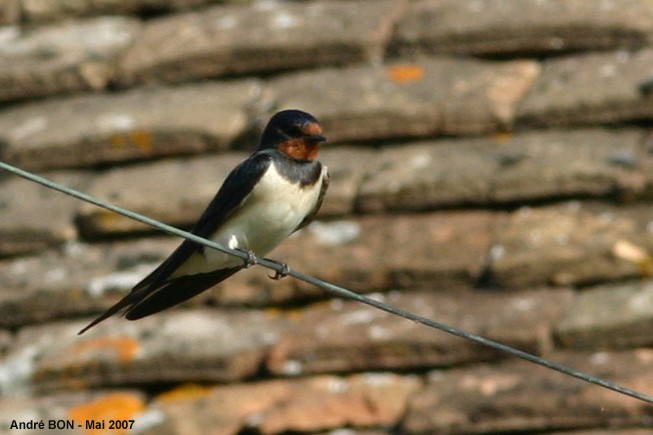
|
Barn Swallows often perch on electric wires. When this old farm was still in activity, I have numbered up to 30 nests at the same time. |
| [To know more about the Barn Swallow] [Next picture] [Previous picture] [Top] |
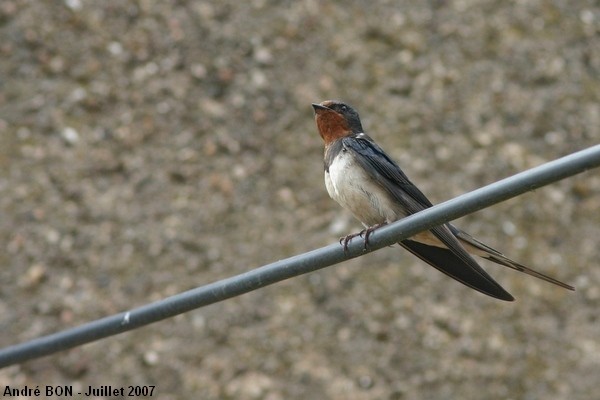
|
Taking a picture of a Barn Swallow at the height of the eyes is a very difficult task when it is used to landing on electric wires. |
| [To know more about the Barn Swallow] [Next picture] [Previous picture] [Top] |
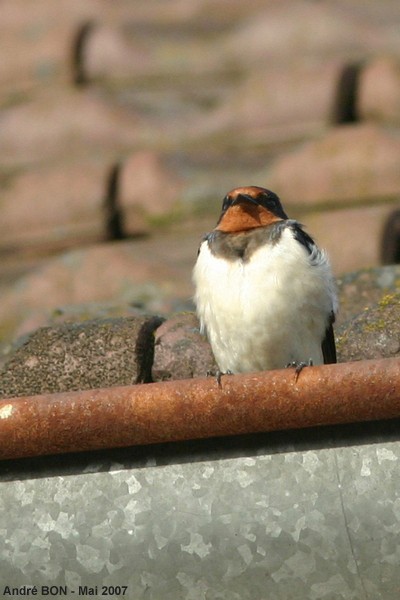
|
This Swallow is waiting for me to walk away to go on building its nest. |
| [To know more about the Barn Swallow] [Next picture] [Previous picture] [Top] |
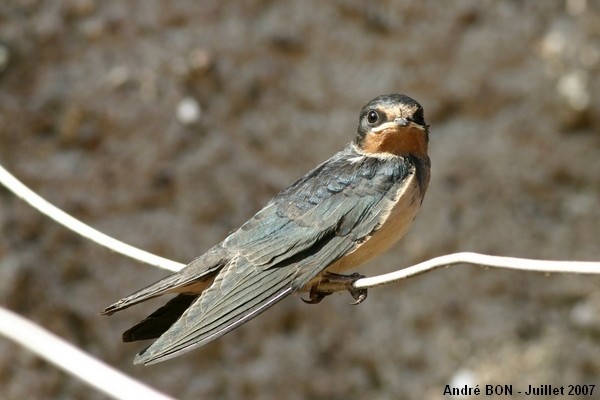
|
I have been able to get very close these juveniles landed on a clothes line next to the door of the room where the nest is located. |
| [To know more about the Barn Swallow] [Next picture] [Previous picture] [Top] |

|
I have been able to approach very close to the juveniles. |
| [To know more about the Barn Swallow] [Previous picture] [Top] |
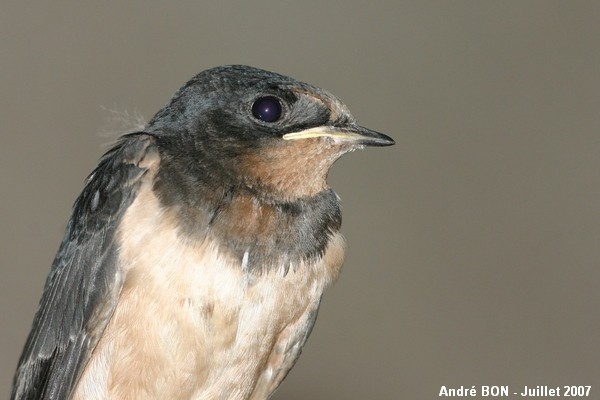
|
I have been able to approach very very very close to the juveniles. |